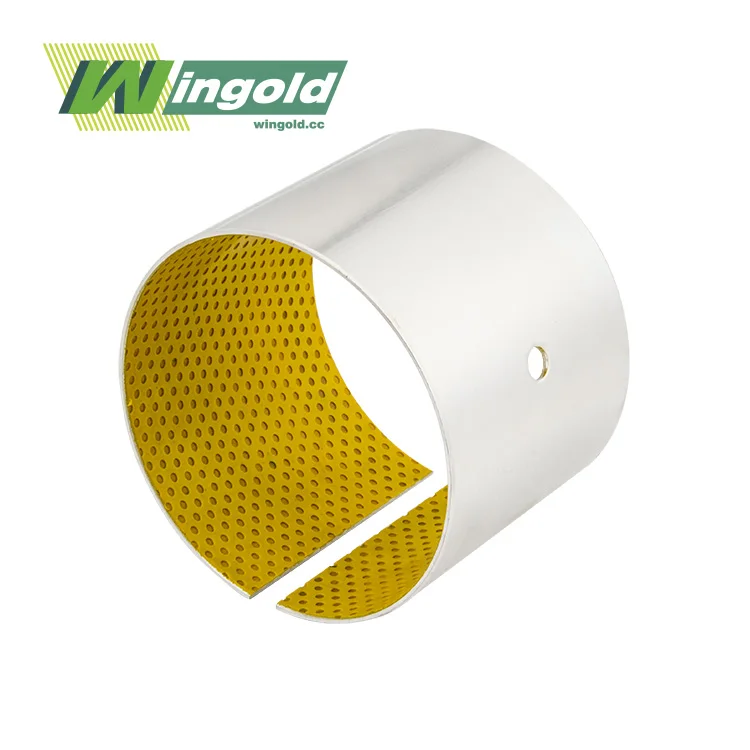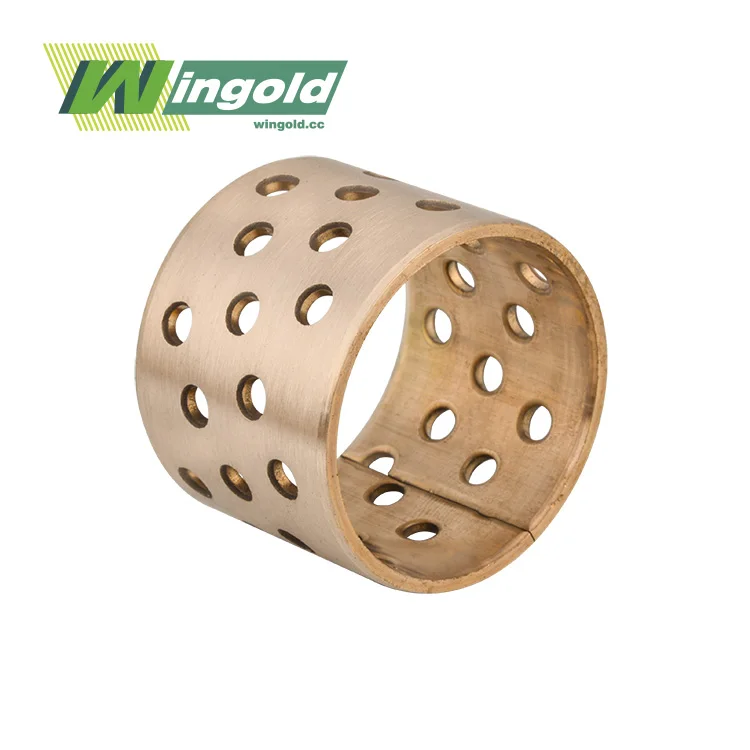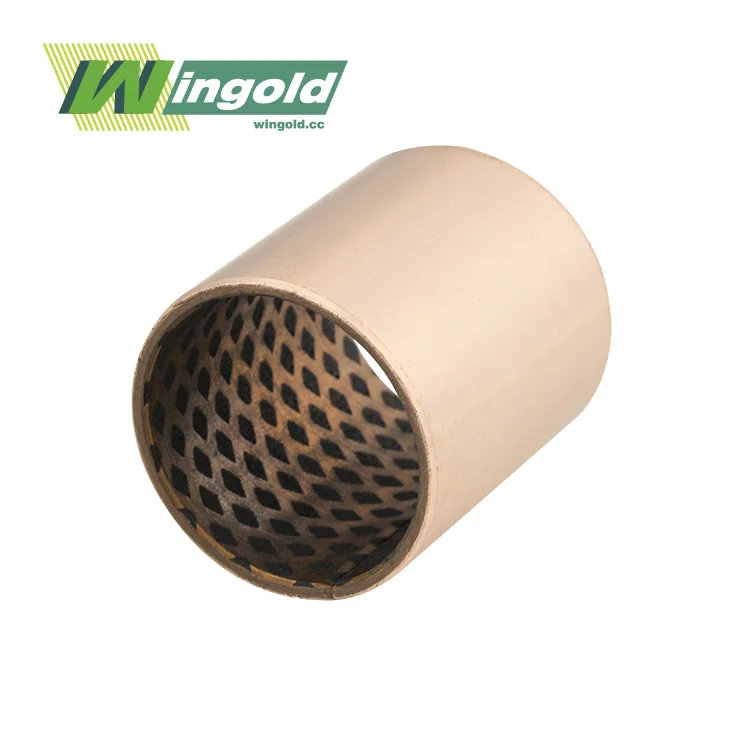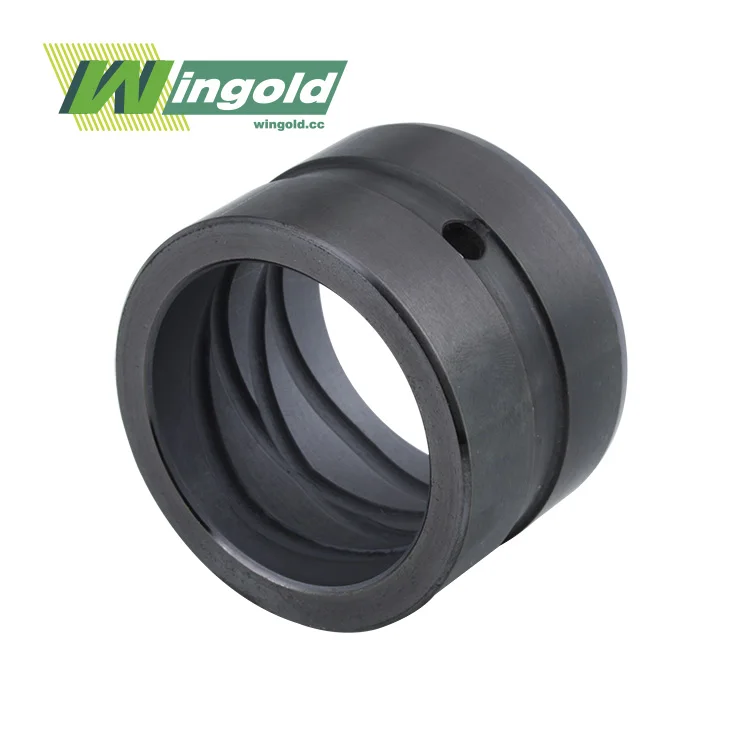The Versatility and Applications of Bronze Bushing Sleeves
Bronze bushing sleeves are renowned for their versatility, finding applications in a wide array of industries and mechanical systems. Their unique properties make them indispensable in various scenarios where reliable, low-friction operation is paramount.
Industrial Machinery
In the realm of industrial machinery, bronze bushing sleeves play a pivotal role. They are extensively used in hydraulic and pneumatic systems, where their ability to withstand high pressures and provide smooth movement is crucial. Forging and pressing machine tools also rely heavily on these components to ensure precise and consistent operations.
Plastic machinery, another sector where bronze bushings shine, utilizes these sleeves in injection molding machines and extruders. The thermal conductivity of bronze helps dissipate heat effectively, contributing to the overall efficiency and longevity of the equipment.
Transportation and Heavy Equipment
The transportation industry benefits greatly from the use of bronze bushing sleeves. In automotive applications, these components are found in suspension systems, steering mechanisms, and engine components. Their durability and low maintenance requirements make them ideal for these high-stress environments.
Railway locomotives and shipbuilding industries also leverage the strengths of bronze bushings. The ability of these sleeves to handle heavy loads and resist corrosion makes them perfect for use in wheel assemblies, bogies, and various marine applications.
Specialized Industries
Beyond heavy industry, bronze bushing sleeves find their way into more specialized sectors. In the textile industry, they are used in spinning and weaving machines, where their smooth operation ensures consistent fabric quality. Food processing equipment relies on these bushings for their hygienic properties and resistance to cleaning agents.
Even in the realm of fitness equipment, bronze bushings play a role. Exercise machines benefit from their low-friction properties, ensuring smooth and quiet operation for user comfort.
Key Features and Benefits of Bronze Bushing Sleeves
The popularity of bronze bushing sleeves stems from their unique combination of properties that make them suitable for a wide range of applications. Understanding these features can help engineers and designers make informed decisions when selecting components for their projects.
Material Properties
Bronze, an alloy primarily composed of copper and tin, offers a unique set of characteristics that make it ideal for bushing applications. The high-density copper alloy base provides excellent strength and durability. This composition allows for the creation of bushings with high load capacity and superior wear resistance.
Moreover, the thermal conductivity of bronze is a significant advantage. It allows for efficient heat dissipation, which is crucial in applications where temperature control is essential. This property helps extend the life of both the bushing and the machinery it's part of.
Design Innovations
Modern bronze bushing sleeves often feature innovative designs to enhance their performance. One such design includes the incorporation of diamond or hemispherical oil indentations on the surface. These indentations serve as reservoirs for lubricants, ensuring consistent lubrication and further reducing friction.
The ability to create these bushings in various sizes and configurations adds to their versatility. With inner diameters ranging from 5mm to 500mm, outer diameters from 8mm to 600mm, and lengths from 10mm to 1000mm, bronze bushing sleeves can be tailored to fit virtually any application.
Performance Advantages
The combination of material properties and design innovations results in several performance advantages. Bronze bushing sleeves offer:
- High load capacity, allowing them to withstand substantial forces without deformation
- Excellent wear resistance, leading to longer service life and reduced maintenance needs
- Low friction coefficient, improving overall system efficiency
- Self-lubricating properties in some designs, further reducing maintenance requirements
- Corrosion resistance, making them suitable for harsh environments
These performance advantages often translate to cost savings over time. While the initial investment in bronze bushing sleeves might be higher compared to some alternatives, their longevity and reduced maintenance needs often result in a lower total cost of ownership.
Manufacturing Processes and Quality Control
The production of high-quality bronze bushing sleeves involves sophisticated manufacturing processes and rigorous quality control measures. Understanding these aspects can provide insight into the reliability and consistency of these critical components.
Advanced Manufacturing Techniques
Bronze bushing sleeves can be manufactured using various techniques, each suited to different requirements and production volumes. Some common methods include:
- Centrifugal Casting: This process involves pouring molten bronze into a rapidly rotating mold. The centrifugal force distributes the material evenly, resulting in a dense, uniform structure with excellent mechanical properties.
- CNC Machining: For more complex designs or smaller production runs, CNC machining centers offer precision and flexibility. This method allows for tight tolerances and complex geometries that might be difficult to achieve with casting alone.
- Extrusion: For certain types of bronze bushings, especially those with consistent cross-sections, extrusion can be an efficient manufacturing method. It allows for the production of long, continuous sections that can be cut to size.
Material Selection and Composition
The choice of bronze alloy is crucial in determining the performance characteristics of the bushing sleeve. Common alloys used include:
- C86300: A manganese bronze alloy known for its high strength and excellent wear resistance.
- C93200: A high-leaded tin bronze that offers good bearing properties and machinability.
- C95400: An aluminum bronze alloy that provides exceptional strength and corrosion resistance, particularly in marine environments.
The selection of the appropriate alloy depends on the specific requirements of the application, including load capacity, operating environment, and expected service life.
Quality Assurance and Testing
To ensure that bronze bushing sleeves meet the stringent requirements of various industries, manufacturers employ comprehensive quality control measures. These typically include:
- Dimensional Inspection: Precise measurements are taken to ensure compliance with specified tolerances. For instance, adherence to ISO 2768 standards is common in the industry.
- Surface Finish Analysis: The surface roughness of the bushings is carefully controlled, typically aiming for a Ra value between 0.8 and 3.2 μm. This ensures optimal performance and wear characteristics.
- Material Testing: Chemical composition analysis and mechanical property tests are conducted to verify that the bronze alloy meets the required specifications.
- Performance Testing: Specialized laboratories conduct tests such as friction coefficient measurement and accelerated life testing to predict and ensure the long-term performance of the bushings.
By adhering to international standards such as ISO 4383 and ASTM B22, manufacturers can ensure that their bronze bushing sleeves meet or exceed industry expectations for quality and reliability.
Conclusion
Bronze bushing sleeves are indispensable components in modern machinery, offering a unique combination of strength, durability, and low-friction performance. Their versatility makes them suitable for a wide range of applications across various industries, from heavy machinery to precision equipment. The advanced manufacturing processes and rigorous quality control measures employed in their production ensure consistent, high-quality components that can withstand demanding operating conditions.
As technology continues to advance, we can expect further innovations in bronze bushing sleeve design and manufacturing, potentially leading to even more efficient and durable components. For engineers and designers looking to optimize their mechanical systems, bronze bushing sleeves remain an excellent choice, offering reliability, longevity, and cost-effectiveness. For more information about bronze bushing sleeves and how they can benefit your specific application, please don't hesitate to contact us at info@wingold.cc.
FAQ
How long do bronze bushing sleeves typically last?
The lifespan of bronze bushing sleeves can vary greatly depending on the application, operating conditions, and maintenance practices. In well-maintained systems, they can last for many years or even decades.
Are bronze bushing sleeves suitable for high-temperature applications?
Yes, bronze has good thermal properties and can withstand relatively high temperatures. However, the exact temperature range depends on the specific bronze alloy used.
Can bronze bushing sleeves be used in wet or corrosive environments?
Many bronze alloys offer excellent corrosion resistance, making them suitable for use in marine environments or other potentially corrosive settings. However, the specific alloy should be chosen based on the expected operating conditions.
References
1. Smith, J. (2019). "Advanced Materials in Mechanical Engineering: The Role of Bronze Bushings." Journal of Engineering Materials, 45(3), 287-301.
2. Johnson, R., & Williams, T. (2020). "Comparative Study of Bearing Materials: Bronze vs. Modern Alternatives." International Journal of Tribology, 12(2), 156-170.
3. Brown, A. (2018). "Manufacturing Processes for High-Performance Bronze Bushings." Industrial Engineering Quarterly, 33(4), 412-425.
4. Lee, S., & Park, H. (2021). "Innovations in Bronze Alloy Compositions for Enhanced Bushing Performance." Materials Science and Technology, 28(1), 78-92.
5. Garcia, M. (2017). "Quality Control Methods in Bronze Bushing Production: A Comprehensive Review." Journal of Manufacturing Quality, 22(3), 201-215.




